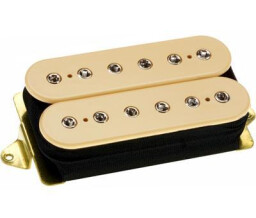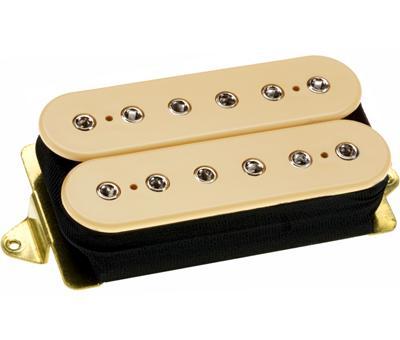View other reviews for this product:
« Updated PAF »
Published on 03/23/11 at 09:02The PAF Pro was one of the first variants of the PAF to ever hit the market. DiMarzio wanted to create a pickup that was geared towards the players of the time, which happened to be the 80s. That means it was created for shredders with huge racks and running tons of effects. The goal was to maintain enough treble and presence to cut through all the tone sucking devices that were abundant due to the lower quality AD/DA converters back then.
The PAF Pro features four conductor wiring with tunable allen head bolts instead of regular slugs that most other pickups featured. DiMarzio says it’s a transparent sounding pickup, and it kinda is, but it really hypes the treble compared to other PAFs on the market. This isn’t your daddy’s PAF.
Sound wise, this pickup is fairly open. There is some hyped treble that you don’t find on most PAFs, but it helps really cut through and give some clarity to the notes. The low notes have a wonderful “vowely” quality that sounds just like the old school humbuckers from back in the day. Midrange is fairly even and lets the other frequencies do most of the work without making it too boxy or scooped sounding. This pickup sounds pretty cool split, but I tend to prefer running it in series. The beauty of this pickup is that it can be used in either the bridge or the neck. In the bridge, it’s a medium output humbucker that stays open. In the neck, it’s a clear, precise pickup that really sings. Personally, I’m not a huge fan of this in the bridge because it doesn’t compress to my liking, but some really adore that aspect of it.
If you’re looking for an updated, higher output PAF that’s not over the top, this is definitely a pickup worth trying. There are tons on the market, so you should be able to find them at a good price. If you don’t like it, you can always sell it for roughly what you paid.
The PAF Pro features four conductor wiring with tunable allen head bolts instead of regular slugs that most other pickups featured. DiMarzio says it’s a transparent sounding pickup, and it kinda is, but it really hypes the treble compared to other PAFs on the market. This isn’t your daddy’s PAF.
Sound wise, this pickup is fairly open. There is some hyped treble that you don’t find on most PAFs, but it helps really cut through and give some clarity to the notes. The low notes have a wonderful “vowely” quality that sounds just like the old school humbuckers from back in the day. Midrange is fairly even and lets the other frequencies do most of the work without making it too boxy or scooped sounding. This pickup sounds pretty cool split, but I tend to prefer running it in series. The beauty of this pickup is that it can be used in either the bridge or the neck. In the bridge, it’s a medium output humbucker that stays open. In the neck, it’s a clear, precise pickup that really sings. Personally, I’m not a huge fan of this in the bridge because it doesn’t compress to my liking, but some really adore that aspect of it.
If you’re looking for an updated, higher output PAF that’s not over the top, this is definitely a pickup worth trying. There are tons on the market, so you should be able to find them at a good price. If you don’t like it, you can always sell it for roughly what you paid.



